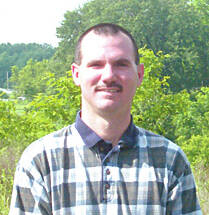
Now that June has arrived, the temperature is heating up as well as the fishing. The walleye at Lake Erie are done spawning and the females are migrating north and east towards deeper water and putting the feed bag on to recover from the stress of reproducing.
The bite is starting to convert from hair jigs and stick crankbaits to spoons and nightcrawler harnesses. It’s a great time of the year to put a quick limit of walleye in the cooler and if you don’t have access to a boat, there are plenty of charters that you can hire. June is a great time to do this and it’s hard to beat walleye as one of the best fish to eat.
The smallmouth bass bite is just starting to heat up as well as they move into their spawning areas. Casting tubes and small plastics like ned rigs in the shallow waters of the rocky banks around the islands of the western basin of Lake Erie can provide a lot of success. There is no greater fishing rush than to watch a five pound smallmouth do acrobatic jumps out of the water as they try to throw your lure. The bite should continue to be hot for the next several weeks until they are done spawning and move on to deeper water.
Locally, the largemouth bass bite is in full court press as well. Many of the fish are transitioning from spawning and are hungry to replace the energy resources they have lost. Crankbaits, jigs, and soft plastics will provide a lot of success. The bass will be moving to deeper areas as the water warms up as well as weed beds when the weeds start to surface in the next few weeks.
• The Ohio Department of Natural Resources Division of Wildlife invites landowners to enroll their property in the Ohio Landowner-Hunter Access Partnership. Enrollment in the program, which incentivizes landowners to provide access to hunters, began June 1 and runs until July 15. Since the program’s launch in 2021, more than 15,000 acres have been enrolled.
Those interested in enrolling their property can visit the Ohio Landowner-Hunter Access Partnership page at wildohio.gov to receive more information. Landowners can receive annual payments ranging from $2 per acre for crop land to $30 per acre for perennial wildlife habitat such as grasslands, wetlands, and forests. Enrollment contracts are two years, with the possibility of re-enrollment.
The Ohio Landowner-Hunter Access Partnership program is funded, in part, by the federal Farm Bill under the Voluntary Public Access and Habitat Incentive Program. This bill provides funding to state and tribal agencies through a competitive grant process to implement programs encouraging hunting access on private properties.
Enrolled lands can be accessed between September and June by those with a free daily access permit. Permits are distributed on a first come, first served basis, and reduce overcrowding on huntable lands. Participating hunters receive a list of rules for the property prior to accessing the land, and landowners receive a notification when hunters will access their property. All hunting activities except white-tailed deer gun hunting are permitted by Ohio Landowner-Hunter Access Partnership users. Permits can be obtained at wildohio.gov or on the free HuntFish OH mobile app.
A recent survey showed that landowners enrolled in Ohio Landowner-Hunter Access Partnership are overwhelmingly satisfied with the program. More than 80% of respondents would recommend enrollment to other Ohio landowners. More than 100 parcels are currently enrolled.
Hunters and landowners can find more information about the program, including answers to frequently asked questions, on the Ohio Landowner Hunter Access Partnership page at wildohio.gov.
• The ODNR Division of Wildlife has confirmed 11 additional white-tailed deer tested positive for Chronic Wasting Disease in Marion and Wyandot counties.
Seven of the CWD-positive deer were bucks, and four were does. Testing was performed on deer harvested by hunters during the 2022-23 season, as well as on deer taken through targeted removal efforts in February and March. Postseason deer removal is meant to slow the spread of CWD by reducing deer numbers in areas where the disease has been detected.
Since the fall of 2020, a total of 22 wild deer have tested positive for CWD, all in Wyandot and Marion counties (16 in Wyandot, six in Marion). CWD is a fatal neurological disease that affects white-tailed deer and other similar species, including mule deer, elk, and moose. According to the Centers for Disease Control and Prevention, there is no strong evidence that CWD is transmissible to humans. Find more information about CWD, including a map of known locations, at ohiodnr.gov/cwd.
Sampling for CWD will continue in the 2023-24 deer hunting season. Special deer hunting regulations and hunting opportunities will be in effect in the disease surveillance area of Hardin, Marion, and Wyandot counties.
Until next time, Good Hunting and Good Fishing!
Ken Parrott is an Agricultural Science teacher with Northmor High School.

